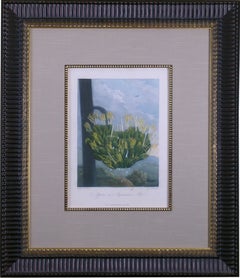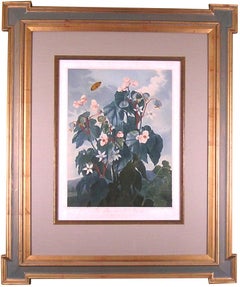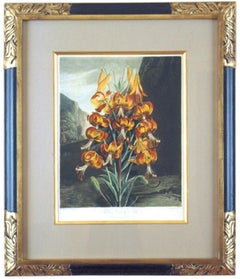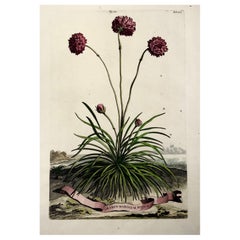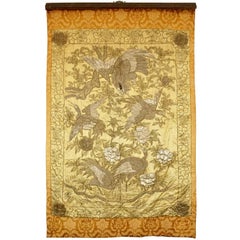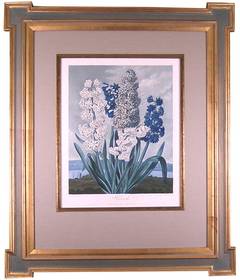Sold Silk Hawk Painting
Early 19th Century Academic Prints and Multiples
Watercolor, Archival Paper, Archival Tape, Gesso, Handmade Paper, Plexig...
Early 19th Century Academic Prints and Multiples
Watercolor, Silk, Rag Paper, Plexiglass, Handmade Paper, Archival Tape, ...
Early 19th Century Academic Prints and Multiples
Silk, Archival Paper, Archival Tape, Handmade Paper, Laid Paper, Plexigl...
18th Century and Earlier Academic Prints and Multiples
Archival Paper, Watercolor, Archival Tape, Engraving, Gesso, Handmade Pa...
Early 19th Century Academic Prints and Multiples
Aquatint, Watercolor, Archival Paper, Archival Tape, Engraving, Handmade...
People Also Browsed
Antique 1690s Baroque Prints
Paper
Early 20th Century German Chinoiserie Decorative Dishes and Vide-Poche
Enamel
1810s Landscape Prints
Paper
Antique 19th Century English Victorian Ceramics
Majolica
Antique 1890s French Gothic Wall Lights and Sconces
Wrought Iron
Early 1800s Old Masters Landscape Prints
Mezzotint
Early 19th Century Academic Figurative Prints
Engraving
Antique Early 1900s French Gothic Revival Chandeliers and Pendants
Wrought Iron
1970s Abstract Abstract Drawings and Watercolors
Paper, Gouache
19th Century Modern Still-life Prints
Paper
Antique Early 17th Century German Prints
Laid Paper
Antique 19th Century English Prints
Paper
20th Century Chinese Table Lamps
Porcelain
1740s Naturalistic Still-life Prints
Watercolor, Engraving, Laid Paper, Intaglio
Early 18th Century Old Masters Still-life Prints
Engraving
Antique 19th Century Japanese Meiji Metalwork
Copper, Enamel
Recent Sales
Antique 1870s Japanese Meiji Tapestries
Silver
Early 19th Century Academic Prints and Multiples
Laid Paper, Plexiglass, Silk, Watercolor, Archival Paper, Archival Tape,...
Dr. Robert John Thornton for sale on 1stDibs
A Close Look at academic Art
During the Renaissance, the first European fine art academies were established in Italy and would guide the style and standards of visual culture in the following centuries. Academic art became dominant across the continent in the 17th century, with artists coming together to offer instruction in this style of painting and sculpture.
The academic art period represented a significant change from the previous era when painters, sculptors and other artists were part of guilds and seen more as artisans than purveyors of culture. While patronage from the elite and the church remained pivotal, young artists were able to support themselves for the first time through academic exhibitions and an independent marketplace. The leading academies included the French Académie Royale de Peinture et de Sculpture founded in Paris in 1648 (which became the Académie des Beaux-Arts after the French Revolution) and the London Royal Academy of Arts formed in 1768 under the inaugural leadership of painter Joshua Reynolds.
Academy students sketched drawings based on prints, sculptures and, finally, live models. Movements including neoclassicism and romanticism were particularly popular in these art schools and institutions where the influence of Raphael and Nicolas Poussin was prominent. Beaux Arts architecture and furniture design drew on these movements, too, and, as they also originated at the Académie des Beaux-Arts, the disciplines share common ground with academic painting and sculpture.
Although academic art was a major shift for artistic status when it began, by the middle of the 19th century it was viewed as stodgy and resistant to new ideas, with the subject matter of artists such as William-Adolphe Bouguereau and Jean-Léon Gérôme generally limited to allegorical or mythological themes. Impressionism, realism and the other movements that engaged with contemporary issues that followed were direct reactions to the academic tradition, although it continued to inform the avant-garde as artists like Gustav Klimt and Pablo Picasso started their practices as academic realists.
Find a collection of academic paintings, sculptures, prints and more art on 1stDibs.
Finding the Right prints-works-on-paper for You
Decorating with fine art prints — whether they’re figurative prints, abstract prints or another variety — has always been a practical way of bringing a space to life as well as bringing works by an artist you love into your home.
Pursued in the 1960s and ’70s, largely by Pop artists drawn to its associations with mass production, advertising, packaging and seriality, as well as those challenging the primacy of the Abstract Expressionist brushstroke, printmaking was embraced in the 1980s by painters and conceptual artists ranging from David Salle and Elizabeth Murray to Adrian Piper and Sherrie Levine.
Printmaking is the transfer of an image from one surface to another. An artist takes a material like stone, metal, wood or wax, carves, incises, draws or otherwise marks it with an image, inks or paints it and then transfers the image to a piece of paper or other material.
Fine art prints are frequently confused with their more commercial counterparts. After all, our closest connection to the printed image is through mass-produced newspapers, magazines and books, and many people don’t realize that even though prints are editions, they start with an original image created by an artist with the intent of reproducing it in a small batch. Fine art prints are created in strictly limited editions — 20 or 30 or maybe 50 — and are always based on an image created specifically to be made into an edition.
Many people think of revered Dutch artist Rembrandt as a painter but may not know that he was a printmaker as well. His prints have been preserved in time along with the work of other celebrated printmakers such as Pablo Picasso, Salvador Dalí and Andy Warhol. These fine art prints are still highly sought after by collectors.
“It’s another tool in the artist’s toolbox, just like painting or sculpture or anything else that an artist uses in the service of mark making or expressing him- or herself,” says International Fine Print Dealers Association (IFPDA) vice president Betsy Senior, of New York’s Betsy Senior Fine Art, Inc.
Because artist’s editions tend to be more affordable and available than his or her unique works, they’re more accessible and can be a great opportunity to bring a variety of colors, textures and shapes into a space.
For tight corners, select small fine art prints as opposed to the oversized bold piece you’ll hang as a focal point in the dining area. But be careful not to choose something that is too big for your space. And feel free to lean into it if need be — not every work needs picture-hanging hooks. Leaning a larger fine art print against the wall behind a bookcase can add a stylish installation-type dynamic to your living room. (Read more about how to arrange wall art here.)
Find fine art prints for sale on 1stDibs today.
